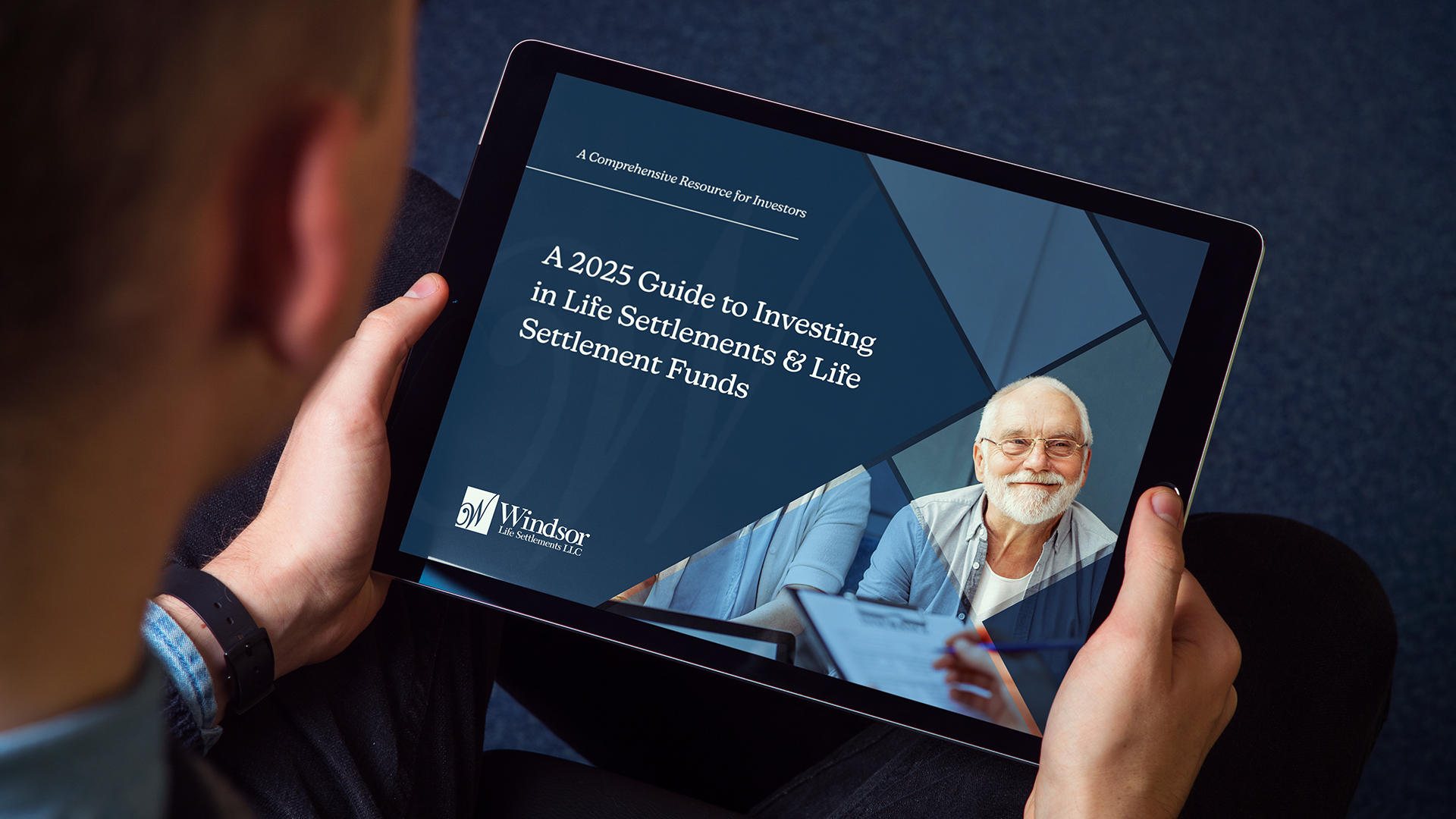
- Author: Windsor Life Settlements
- Published Date:
Chapter 4: What Are the Risks of Investing in Life Settlements?
With the U.S. equity markets reeling from a wave of tariff-related global tensions, investors are increasingly fleeing to traditional safe havens like U.S. Treasuries and investment-grade bonds. As of early Q2 2025, the S&P 500 has fallen over 12% year-to-date, driven by investor concerns over slowing global trade, inflationary pressures, and the potential for retaliatory trade measures.
In this environment, life settlements are gaining renewed attention — not as a volatile alternative, but as a stable, actuarially-grounded asset class offering bond-like characteristics with potentially higher returns. With speculation growing that the Federal Reserve may cut interest rates to mitigate recession risk, yield-seeking investors are again looking toward non-market correlated strategies like life settlements.
But like all investment vehicles, life settlements carry distinct risks. This chapter explores those risks — and the strategies sophisticated investors use to mitigate them effectively.
1. Longevity Risk: The Core Variable
What it is: The risk that the insured individual outlives their actuarially estimated life expectancy (LE). Since returns are tied to the timing of the death benefit payout, a longer-than-expected lifespan reduces the effective IRR.
Impact: For every additional year a policyholder lives beyond the projected LE, the return on investment can decline meaningfully — sometimes turning an attractive 10–12% IRR into a low single-digit return.
How investors mitigate it:
- Diversification across large pools of policies with varied life expectancies, health conditions, and ages
- Using multiple LE providers for balanced underwriting assumptions
- Stress testing portfolios with longer LE assumptions (e.g., +24 to +36 months)
Data Point: A study from the Wharton School found that portfolios with 100 or more policies exhibit longevity smoothing, reducing standard deviation of returns by over 40% compared to portfolios with 10 or fewer policies.
2. Regulatory Risk: Varies by State
What it is: Life settlements are regulated at the state level, and the legal landscape can evolve. Changes in regulation could affect the ability to purchase policies, impose additional reporting requirements, or influence secondary market pricing.
Impact: While regulation has generally moved toward greater transparency and consumer protection, shifts in state laws could introduce new compliance obligations for funds and providers.
How investors mitigate it:
- Work with licensed brokers and providers in fully regulated states
- Ensure policies are acquired with clear chain-of-title and disclosures
- Favor transactions governed by strong state consumer protection laws
Current Coverage: As of 2025, 43 states and D.C. regulate life settlements, representing over 90% of the U.S. population. Source: NAIC, 2025.
3. Illiquidity: Life Settlements Are Not Quick Exit Assets
What it is: Life settlements are inherently illiquid. There is no active public market for individual policy trades, and resale of policies is possible but not guaranteed.
Impact: Investors should be prepared to hold policies for 3 to 10+ years, depending on the insured’s life expectancy. This can pose challenges for liquidity-sensitive portfolios.
How investors mitigate it:
- Allocate only a portion of capital to life settlements (e.g., 5–10%)
- Participate through open-ended or interval funds that manage liquidity
- Ensure managers use cash-flow modeling to ladder maturities
Market Comparison: While bonds are typically more liquid, the predictability and risk-adjusted return of life settlements can exceed corporate bonds and even high-yield debt in diversified portfolios.
4. Servicing and Tracking Risk
What it is: Investors or funds must maintain policies by paying premiums, updating ownership with insurance carriers, and tracking the health status of the insured.
Impact: Failure to pay premiums or track the insured accurately can lead to policy lapse — a worst-case scenario resulting in a total loss of investment.
How investors mitigate it:
- Engage third-party servicers with secure infrastructure
- Use centralized policy management platforms
- Require real-time tracking of insured status and medical updates
Best Practice: Institutional-grade servicing firms often use dual-premium escrow systems, ensuring payments are made regardless of investor cash flow timing.
5. Macroeconomic Sensitivity: Interest Rate Environment
While life settlements are largely uncorrelated with public markets, they are influenced by capital availability and investor appetite — which are tied to interest rates and credit conditions.
In 2025, with the Federal Reserve potentially preparing for rate cuts to stimulate economic growth amidst trade-driven contraction, the appeal of life settlements may rise substantially.
- Lower rates compress bond yields, making non-correlated, fixed-return assets more attractive
- Life settlement funds may see higher inflows, driving up policy prices and improving secondary market liquidity
- Historically, low-rate environments have correlated with increased policy origination, as seniors seek liquidity
Supporting Insight: A 2023 Barclays Alternatives Outlook noted that in low-rate cycles, “life settlements have consistently outperformed core fixed-income assets on a risk-adjusted basis, while delivering drawdown protection.”
Conclusion: Known Risks — and Known Strategies to Manage Them
Life settlements are not risk-free — but their risks are defined, modelable, and manageable. Unlike equities or real estate, the variability in outcomes is rooted in actuarial projections, not market speculation or macro swings.
As equity markets stumble and capital flows toward safer ground, life settlements offer investors a bond-like refuge with the potential for superior returns. When structured through experienced managers using data-driven underwriting, the asset class delivers on its promise: a stable, non-correlated stream of long-term value.
In the next chapter, we’ll explore how those returns are structured — with actual IRR models, historical fund performance, and real-life policy case studies.
- Author: Windsor Life Settlements
- Published Date:
Windsor Life Settlements
Questions? Comments?
We’re available by phone Monday-Friday 9am-5pm CT